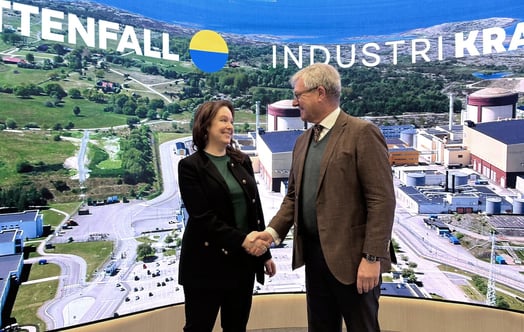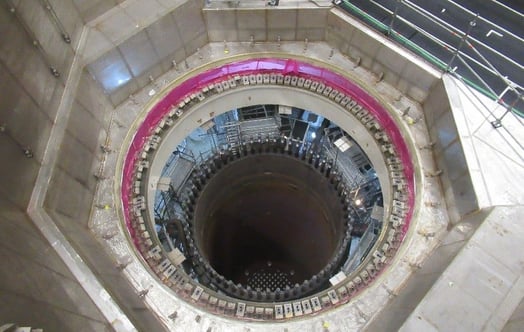Forsmark and Ringhals nuclear power plants aim for 80 years of operation of existing reactors
The owners of the Forsmark and Ringhals nuclear power plants in Sweden have taken a directional decision to extend the operating lifetime of the plants' reactors from 60 to 80 years. This would enable further fossil-free electricity into the 2060s, which favours the industry transition as well as the availability of efficient electricity supply to Swedish consumers.
”Nuclear power will play an important role in Swedish fossil-free electricity production for many decades and it is therefore of the utmost importance to invest not only in new nuclear power, but also in our existing reactors. After the extensive modernisations that have been carried out in the past, we see good prospects for extending the operating life up to 20 years," says Torbjörn Wahlborg, Senior Executive Vice President Generation in the Nordic region at Vattenfall.
Extending the operating life of the five reactors at Forsmark and Ringhals by 20 years could provide a total of more than 800 TWh of fossil-free electricity, which is roughly equivalent to today's Swedish electricity consumption for six years.
Following this directional decision an in-depth investigation phase awaits, which will include more detailed cost calculations and an analysis of identified risks in terms of expertise and suppliers, among other things. After this, a final investment decision can be made. Most of the necessary investments are planned to take place in the 2030s.
Major benefits of extended operational lifetime
“The preliminary study that has been carried out shows that it is efficient to utilise investments that have already been made and that contribute to a low-carbon emissions electricity system. Extending the operating time of existing reactors does not entail any complex licensing processes and we also believe that the additional nuclear waste can be accommodated within the system for nuclear waste from existing reactors," says Björn Linde, CEO of Forsmark Kraftgrupp AB and Ringhals AB.
To extend the operating time, investments of an estimated SEK 40-50 billion are being made to replace or renovate systems and components. Technical needs include maintenance, refurbishment or replacement of components such as turbines, condensers, generators, as well as modernisation of control and monitoring systems. Investments are also required in switchyards and power lines, plant buildings and other infrastructure.
Facts:
Forsmark has three reactors with an annual production capacity of approximately 25 TWh of electricity. Vattenfall owns 66 per cent of Forsmarks Kraftgrupp. Mellansvensk Kraftgrupp owns 25.5 per cent, with Fortum as the largest shareholder, and Uniper (Sydkraft Nuclear Power) owns 8.5 per cent.
Ringhals has two reactors with an annual production capacity of almost 17 TWh. Vattenfall owns 70.44 per cent and Uniper (Sydkraft Nuclear Power) 29.56 per cent of Ringhals AB.
For more information, please contact:
Vattenfall Press Office, +46 8 739 50 10, press@vattenfall.com



